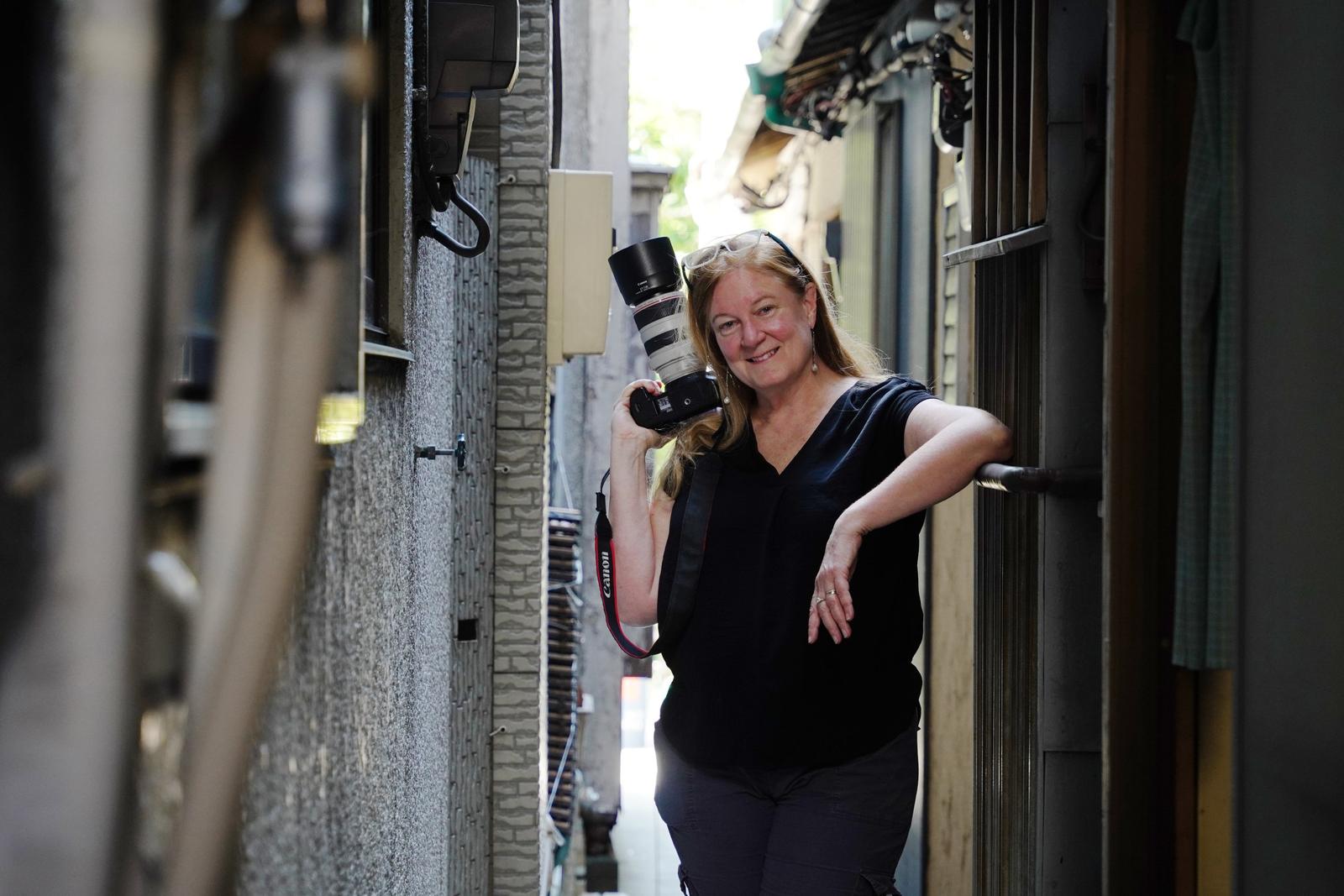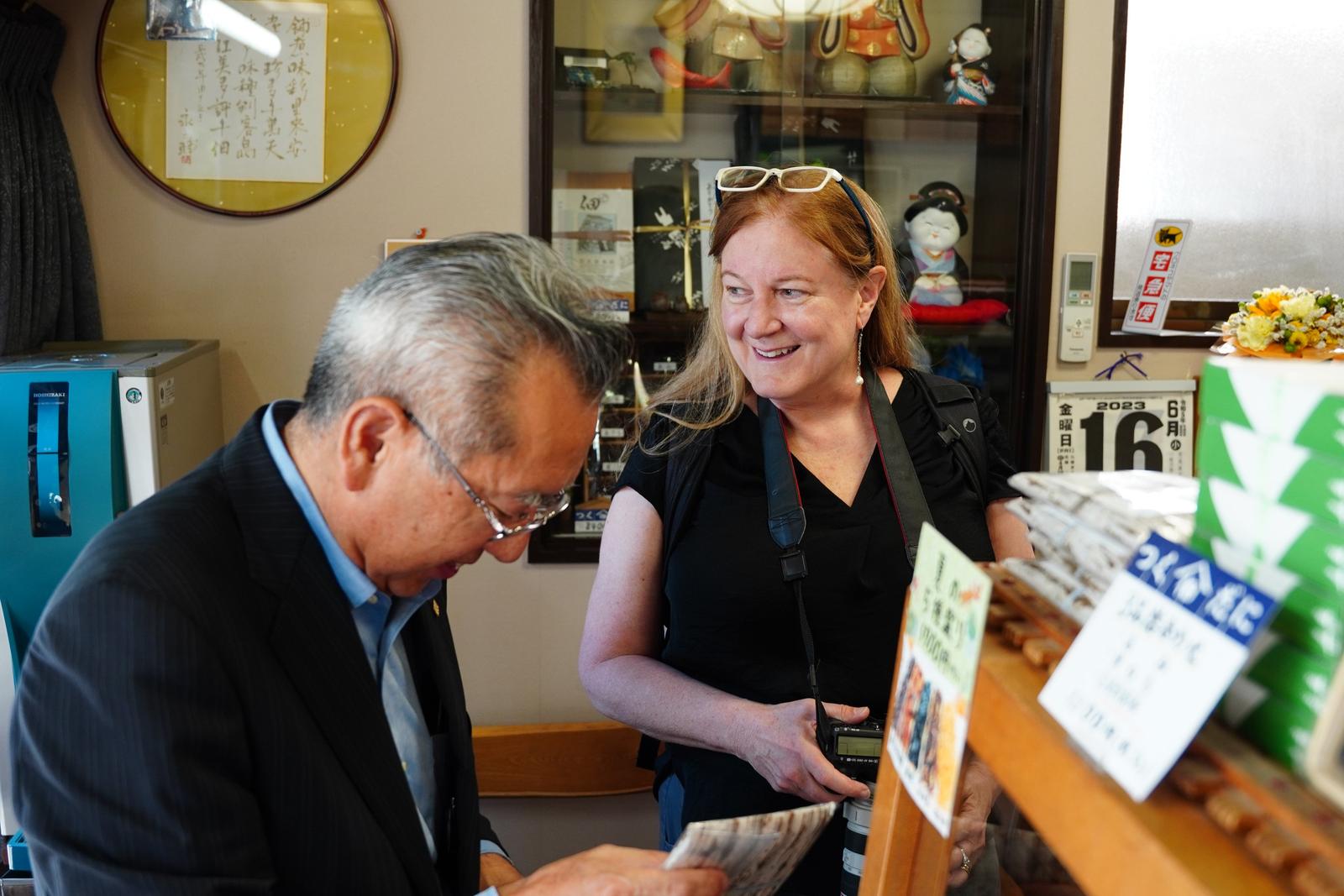Correspondents' Eye on Tokyo:
Kit Nagamura Explores Tokyo's Backstreets

Backstreet Beginnings
Kit Nagamura had an interest in Japanese culture from a young age, being introduced to haiku (traditional Japanese poetry) by her grandfather at the age of six. Much of her family had an interest in Japan, but she took it a step further by moving to the country in 1982 to start her own project, exploring the art and artists of Tokyo.
Before coming to Tokyo, she studied English and Fine Arts at Brown University and Rhode Island School of Design. At one point, she had to diversify her classes and ended up taking economics, which is where she met Kato Shuichi, the Tokyo-born author of Form, Style, Tradition: Reflections on Japanese Art and Society. If it were not for Kato's encouragement, she would not have applied for the Samuel T. Arnold Fellowship that allowed her to come to Japan.
In fact, it was later at the house of Kato and his wife, Yajima Midori, that Nagamura wrote her first poem in Tokyo. She elaborated, "They were a fiercely intelligent couple and they were always talking about cerebral things. But when they talked about (their dog) Roku-san, it was so different, so lovingly intimate. So I wrote about that."
This was perhaps a small preview of what was to come years down the line, when Nagamura developed a fascination with the everyday in Tokyo. She started a column in 2006 with The Japan Times titled Walking the Wards: "I wanted to cover all 23 wards (cities located in the eastern part) of Tokyo and determine why they were set up that way, and what made each city different." With a film camera in hand, it took around two years to finish the entire series.
That was the spark behind her subsequent ongoing series, The Backstreet Stories: "Reading The Japan Times, I thought, 'a local paper needs local material. It's what makes a paper unique, and honors local people.'"
Locations and Inspiration
Part of the inspiration for these unique stories lies in her fascination with Tokyo's zoning system that seems a lot looser and more creative than other cities she has been to. "Those relaxed zoning systems offer an awful lot of interesting street activity. You'll have restaurants and metalworkers, concrete factories and parks, all in the same neighborhood. That fabulous interconnection between the various economic enterprises is so rich and attractive."
She has some favorite spots in Tokyo for artistic pursuits, such as the high-class shopping district of Ginza for reflections, geometric shapes and lines; "The way the sun slants through tall buildings can be really dramatic and exciting." But for the most part, when story-hunting, she lets chance and intuition guide her, resulting in some unexpected situations. Even during our photoshoot today, she ended up making friends with a passerby who was unfamiliar with the neighborhood; "I thought, I can demonstrate how I interact with people on the street, and I can show this gentleman some local sights at the same time."

Even on slow days, Nagamura finds stories in every crevice of the city. She recalled a time when she spent four days wandering the same area, finding nothing, until one day after the rain she noticed that "bicycles were coming towards me and slipping sideways. I thought, 'Why are they slipping?' I looked down and there were hundreds of thousands of earthworms. I'd found an earthworm alley in Tokyo!"
These types of alleyways are a good source of inspiration for her, making roji (alleyway) one of her favorite Japanese words. This is alongside wabi-sabi (acceptance of transience and imperfection), and shiki, which became the title of one of her haiku and photography collections. She intentionally left "Shiki" romanized because multiple words in Japanese are pronounced that way, such as consciousness, four seasons, and haiku master Masaoka Shiki's name.
It is unsurprising that Masaoka is just one of a long list of Tokyo and Japan-based creatives who have motivated and inspired her. Others include writer and columnist Karen Hill Anton and haiku experts such as Kakutani Masako, Nakahara Michio, and Miyashita Emiko. Each helps her move forward, while also bringing her back down to earth.
Freely Accessing Her Imagination
She continues to expand her creative scope, and is currently in her fifth year of giving lectures on haiku at the Basho Memorial Museum in Tokiwa, Koto City. In addition to her poetry and an upcoming book, she has recently taken up painting: "Painting is interesting because, for me, it's a side step from photography. When you take a photograph, you have an idea of how you'd like it to be, and it doesn't always deliver. With painting, if you have the skills, you can access your creative imagination more freely."
Kit Nagamura
Photos by Cassandra Lord





